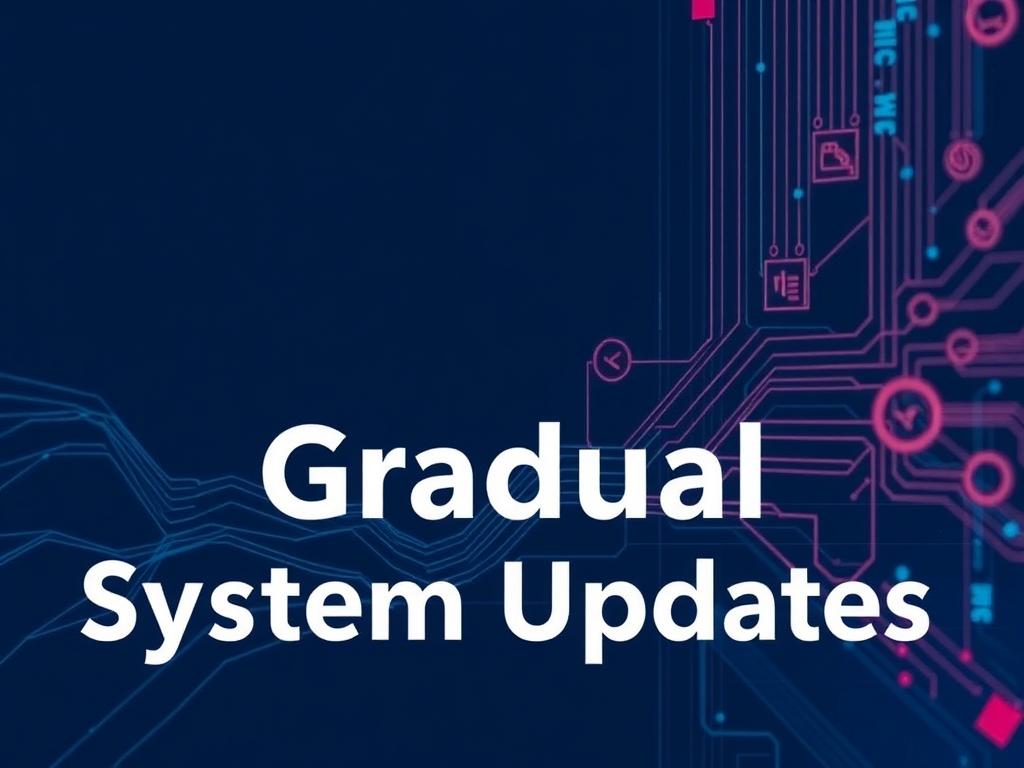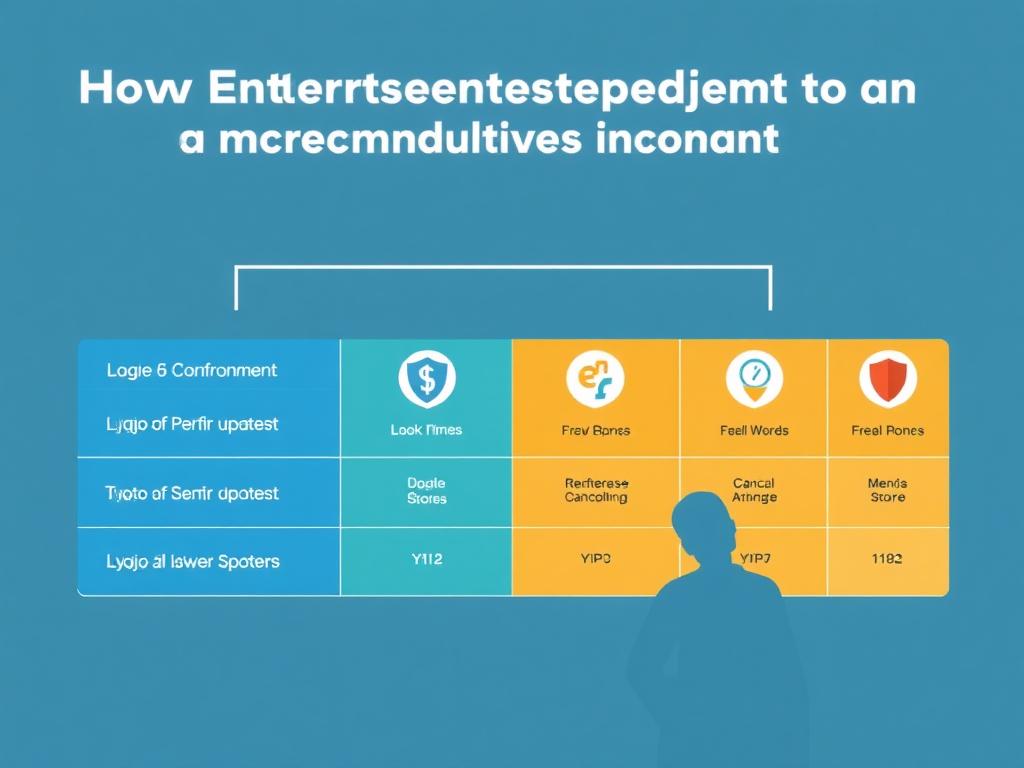In today’s fast-paced digital landscape, businesses cannot afford downtime or drastic shifts that disrupt productivity. Enterprises are increasingly adopting gradual system updates as a strategic approach to stay competitive, secure, and efficient without compromising their day-to-day operations. Gradual system updates are more than just a technical choice—they represent a mindset shift towards managing change in a controlled, flexible manner. This approach allows organizations to balance innovation with stability, reduce risks associated with large-scale upgrades, and harness new capabilities without overwhelming their teams or infrastructure.
When enterprises implement gradual system updates, they effectively minimize disruptions. Instead of a sudden overhaul, updates are rolled out incrementally, enabling IT departments to monitor progress and quickly address any emerging issues. This pipelined method not only boosts confidence in the update process but also ensures continuous business operations. As a result, workflows remain uninterrupted, personnel can adapt steadily, and customer experiences stay consistent. Enterprises benefit from this seamless transition, which helps avoid the frustrations and setbacks often linked with massive, one-time updates that may cause downtime, compatibility problems, or performance hiccups.
Another significant advantage lies in the reduced risk of failures. With step-by-step updates, each stage can be thoroughly tested in real-world conditions, allowing for immediate corrections and refinements. This tight feedback loop fosters a proactive culture where problems are caught early rather than snowballing into bigger challenges. Additionally, gradual updates provide an ideal opportunity for enterprises to gather user feedback at each phase, enhancing the relevance and usability of system improvements. As a result, the final updated system is more robust, aligned with user needs, and capable of delivering ongoing value.
Key Benefits of Gradual System Updates for Enterprises

Below is a table summarizing the critical benefits that enterprises enjoy when choosing gradual system updates over traditional big-bang upgrades:
| Benefit | Description |
|---|---|
| Minimized Downtime | Updating systems in small increments prevents prolonged outages, keeping business operations smooth. |
| Risk Management | Stepwise updates allow identifying and fixing issues early, reducing chances of critical failures. |
| Improved User Adoption | Gradual change gives employees time to learn and adapt, easing the transition and reducing resistance. |
| Better Feedback Integration | Enterprises can incorporate user insights at each stage, tailoring updates to meet actual needs. |
| Resource Optimization | Smaller updates spread workload across time, avoiding resource bottlenecks and staff burnout. |
| Scalability | Allows enterprises to scale new features selectively, assessing impact before full deployment. |
How Gradual Updates Align with Enterprise Goals
Every enterprise has strategic goals, from enhancing security to improving customer satisfaction and fostering innovation. Gradual system updates serve as a key enabler for several of these objectives. Security, for instance, benefits greatly because updates that patch vulnerabilities are deployed quickly and tested thoroughly, preventing gaps in protection that could be exploited by cyber threats. Instead of waiting for a massive update, which might leave systems exposed, smaller patches can be rolled out continuously. This agile approach strengthens the enterprise’s security posture over time.
Moreover, when enterprises want to introduce new technologies—whether it’s cloud integration, AI capabilities, or advanced analytics—a gradual update paves the way for smooth adoption. Employees feel less overwhelmed, training can be delivered efficiently, and legacy systems remain operational as new modules are introduced selectively. This promotes a culture of continuous improvement where upgrades become part of the routine rather than a dreaded upheaval.
Best Practices for Implementing Gradual System Updates
Enterprises looking to maximize the benefits of gradual updates should consider the following best practices:
- Develop a Clear Update Roadmap: Define the order, timing, and scope of updates to maintain clarity and control.
- Engage Stakeholders Early: Involve IT teams, end-users, and management to gather input and build support.
- Test in Stages: Use pilot groups or test environments to validate updates before wide release.
- Communicate Changes Effectively: Keep employees informed about what’s changing and when, to reduce anxiety and resistance.
- Monitor and Collect Feedback: Implement tools and processes to track performance and user satisfaction continuously.
- Automate Where Possible: Use automation to streamline update deployment, reduce errors, and speed up processes.
Challenges and How to Overcome Them
While gradual system updates offer compelling benefits, enterprises must be aware of potential challenges. Coordination across departments can become complex, especially in large organizations with diverse systems and user groups. Ensuring compatibility between updated and legacy components might require additional testing and integration work. There’s also the risk that spreading updates over time could cause update fatigue or complacency, where attention to the process wanes.
To overcome these obstacles, enterprises should invest in strong governance frameworks that centralize oversight while empowering local teams. Clear documentation and version control help track changes and compatibility. Regular training and engagement campaigns keep momentum alive, emphasizing the importance of each update stage. Ultimately, a proactive approach to communication and collaboration will help smooth out the complexities inherent in gradual system updates.
Technology and Tools Supporting Gradual System Updates
The good news for enterprises is that a host of modern tools simplify the gradual update process. Continuous integration and continuous deployment (CI/CD) pipelines enable automated testing and rollout, reducing human error and speeding the cycle. Configuration management tools like Ansible, Chef, or Puppet help standardize environments so updates are predictable and repeatable. Monitoring platforms provide real-time insights into system health and user experience, allowing rapid response to any issues arising during incremental updates.
Key Tools Comparison

| Tool | Primary Use | Benefit for Gradual Updates |
|---|---|---|
| Jenkins | CI/CD Automation | Automates build, testing, and deployment for consistent gradual releases. |
| Ansible | Configuration Management | Manages system settings across servers, ensuring uniform update application. |
| New Relic | Performance Monitoring | Delivers real-time performance data to catch issues during updates early. |
| Git | Version Control | Tracks changes at code level, supporting rollback if needed in updates. |
Gradual Updates and Enterprise Agility
In the broader context of enterprise agility, gradual system updates are a cornerstone practice. Businesses that embrace this method demonstrate a commitment to iterative improvement and responsiveness. Rather than being locked into rigid technology cycles, these enterprises dynamically adjust their IT landscape in step with evolving market conditions, regulatory requirements, and business priorities. This agility often translates into faster innovation cycles, better alignment between IT and business units, and the ability to pivot when opportunities or risks arise.
Summary of Strategic Advantages

To wrap up the main strategic advantages, here’s a list that enterprises keep front and center when deciding on gradual system updates:
- Enhanced stability: Reduces shock to systems and users alike.
- Incremental innovation: Facilitates introducing new features bit by bit.
- Cost control: Spreads update expenses over time instead of large lump sums.
- Compliance assurance: Allows careful adjustment to meet regulation changes promptly.
- Improved collaboration: Engages multiple stakeholders in a shared process rather than siloed efforts.
Conclusion
Gradual system updates represent a smart, measured approach that helps enterprises navigate the complexities of technology evolution without sacrificing operational continuity or user satisfaction. By breaking down major upgrades into manageable phases, businesses reduce risk, foster better adoption, and maintain agility in a rapidly changing landscape. When paired with clear planning, strong communication, and the right tools, this strategy empowers enterprises to leverage new innovations confidently while securing their present-day operations. In an era where digital transformation is crucial, gradual system updates offer a practical, sustainable path to enduring success.

